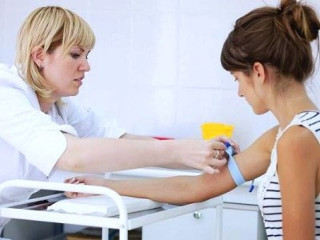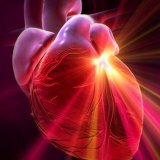How to take blood from a vein and how to get tested correctly, as well as how to prevent a lump or bruise after

Content:
- What hand do they take blood from and why
- Lump or bruise after taking blood
Thanks to laboratory research, today it is possible to establish accurate diagnoses of diseases, prevent the development of pathologies and carry out effective preventive measures. For such analyzes, secretion products, mucous membranes, blood are needed.
In the process of taking blood from a vein, diseases of a different nature are detected, since blood is not only the most important fluid in the body of a living, but also a huge amount of information about the state organism.
Previously, along with blood sampling from a vein, a blood sample taken from a finger was often used to study the general condition of the patient. But this method did not always meet expectations and gave accurate results.
Thanks to a blood test, it is possible not only to establish an accurate diagnosis of the disease, but also to prescribe adequate treatment. using those medical techniques and drugs that will help a person recover and improve overall condition. Also, along with analyzes to identify the cause of the pathology, they also take tests in the course of treatment.
This step helps to timely adjust therapy in order to achieve the necessary treatment results, identify pathologies, complications, prescribe prophylaxis or supportive therapy.
A blood test allows you to identify the composition of the blood at the cellular level. In the process of taking blood from a vein, the type of disease, its nature, the presence of infections and viruses are also determined, and the ESR is examined.
Carrying out a blood test also helps to identify the nature of the main biological parameters - lipids, electrolytes, enzymes, proteins, glucose. This will allow you to determine various pathological conditions and diseases of such internal organs as heart, vascular system, liver, digestive and endocrine systems, metabolic processes in the body.
In the process of blood tests, hormones are also detected, their level in the body, as well as the functionality of the endocrine system, metabolic processes and digestive characteristics of the body.
The level of the immune system in general is also determined, as well as the level of humoral immunity, the cellular ability to resist infections, viruses and other pathologies.
note
Blood donation is a mandatory procedure when diagnosing a patient; it is carried out along with other necessary research methods to obtain a complete and correct picture of the state person.
Before taking blood from a vein, you should prepare for this procedure.
In order to get reliable figures, you must:
- carry out tests at the time indicated by the doctor;
- before taking tests, eat only approved foods;
- food intake should be at the strictly specified time before blood sampling;
- do not drink alcoholic beverages;
- do not take those medications that can change blood counts and negatively affect test results;
- do not carry out physiotherapy and do not use increased physical activity.
The test data can also be influenced by cyclical female changes in the body - the menstrual period.
Before you take blood for analysis from a vein, you must follow all the doctor's recommendations. Only if this rule is observed, it is possible to obtain accurate data on the state of the blood and the body as a whole.
How to donate blood from a vein to children and adults, and from which hand blood is taken from a vein and why
 There are general rules on how to donate blood from a vein, which should be strictly followed.
There are general rules on how to donate blood from a vein, which should be strictly followed.
The blood test is done in the morning, usually between 8:00 am and 11:00 am, on an empty stomach. On the eve of the day and evening, you should not eat unusual food for yourself, new dishes, salty, spicy and fatty foods. Alcoholic drinks are also excluded.
Before donating blood from a vein, it is not allowed to undergo instrumental examinations and apply physiotherapy therapy.
If you are taking certain medications, you should discuss them with your doctor, and he will give you advice on whether it is okay to take the medication before the tests or whether it is better to abstain for now.
Before the procedure, you should also not smoke (2 hours in advance), try to avoid stressful situations and physical exertion.
If a repeated analysis is necessary, the conditions for donating blood should be the same as for the first sampling of biological material. This is necessary in order to obtain results of the same accuracy. In other words, you must also follow all the rules for preparing for the procedure and the doctor's recommendations.
Many parents are concerned about how and why to donate blood from a vein to babies.
These studies are necessary in order to avoid the development of various pathologies in newborns:
- Allergens are identified. It's no secret that today newborn babies already have allergens in their bodies that in the future, they can cause a lot of trouble for children and change their quality of life for the worse.
- Identification of parasitic and viral infections. For this, serological studies are performed to exclude the presence or confirm the diagnosis mumps, toxoplasmosis, amebiasis, herpes, identify the presence of a harmful parasite and other diseases blood.
- Also, the level of sugar in the blood is determined, which will determine the predisposition of the baby to diabetes mellitus or exclude this diagnosis.
- Find out the blood group of the newborn.
The sampling of biomaterial in babies has its own characteristics, how to donate blood. To do this, take blood from a vein located on the head, on the forearm, on the palm of the back and in the elbow bend. It is in these places in children that you can easily see and feel the veins, which makes it easier to insert the needle into the vein.
Like adults, babies are pulled with a medical tourniquet just above the site of the fence, the injection site is disinfected with an alcohol solution and blood is taken. After the procedure, a cotton swab with an antibacterial agent is placed on the injection site to avoid infection.
Often, the question also arises as to which hand the blood is taken from the vein. The accuracy of the data is not affected by this factor, so blood samples taken from either hand can be analyzed. The choice of the doctor, from which hand the blood is taken from the vein, is most often influenced by the visibility of the veins, since it happens that left or, conversely, on the right, veins can be more visible and pronounced, which makes it easier to harvest biomaterial.
The doctor puts on a tourniquet and asks the patient to use his fist vigorously to see the veins fill with blood. If the veins on the arm during this procedure do not become more visible and tangible, the healthcare professional changes the arm.
Regardless of which hand you take blood from a vein, all medical rules of the procedure must always be followed: preliminary and after blood sampling, treatment of the injection site with an antiseptic, the use of only sterile and disposable instruments for collection material.
Also, regardless of which hand blood is taken from a vein in babies, it is necessary to prepare them psychologically so that the babies do not experience stress that can affect the accuracy of the tests.
After taking blood from a vein, a lump formed, what to do and why a bruise may form
 The reasons that after taking blood from a vein a lump formed or a bruise appeared are the wrong actions of the medical staff, non-observance of the rules for taking biomaterial.
The reasons that after taking blood from a vein a lump formed or a bruise appeared are the wrong actions of the medical staff, non-observance of the rules for taking biomaterial.
Such a hematoma can be colored purple or darker. In the process of resorption, such formations change their color and disappear within 1 or 2 weeks.
If, after taking blood from a vein, a lump formed, this indicates that a large thrombus or an infection has got into this place. The vein was punctured unsuccessfully, and as a result of unprofessional actions of the doctor, blood accumulates in the subcutaneous space.
From the fact that after being taken from a vein, a lump formed on the arm, no one is insured, since this may be an individual feature of a person or is associated with blood diseases. For example, the reasons that a hematoma or a lump formed after taking blood from a vein may be blood clotting disorders, poor-quality needles.
When a bruise appears after taking blood from a vein, the reasons for this are not always physiological in nature or are provoked by various diseases.
Often, the appearance of such formations as bumps and bruises, the appearance of a sensation of pain, are involved medical staff who do not have a residual qualification level, poor-quality collection tools biomaterial.
If a bruise appears after taking blood from a vein, this may indicate that the needle was inserted too quickly and abruptly into the vein, which led to a puncture and damage to both walls of the vessel.
Poor quality needles are one of the causes of bleeding from a vein, in which blood accumulates in the tissues and a hematoma forms.
Often, a bruise or a bump after taking blood from a vein is formed due to the individual characteristics of a person, when the veins are very close to the skin or the vessels themselves have thin walls.
You can quickly get rid of such formations as a bruise or hematoma after taking blood from a vein using various means. The bodyag is very effective - an old and high-quality remedy that absorbs any such formations. Use troxevasin ointment, heparin, or regular iodine. These products are applied in a thin layer and gently rubbed into the skin.
Folk methods are also effective: raw cabbage, alcohol compresses. As a rule, bruises and bruises go away rather quickly without negative consequences.
Partial use of site materials (no more than 30% of the content of the article) is allowed only with a hyperlink on www.med88.ru, full use of the article (more than 30% of the article content) is possible only with written permission edition.



